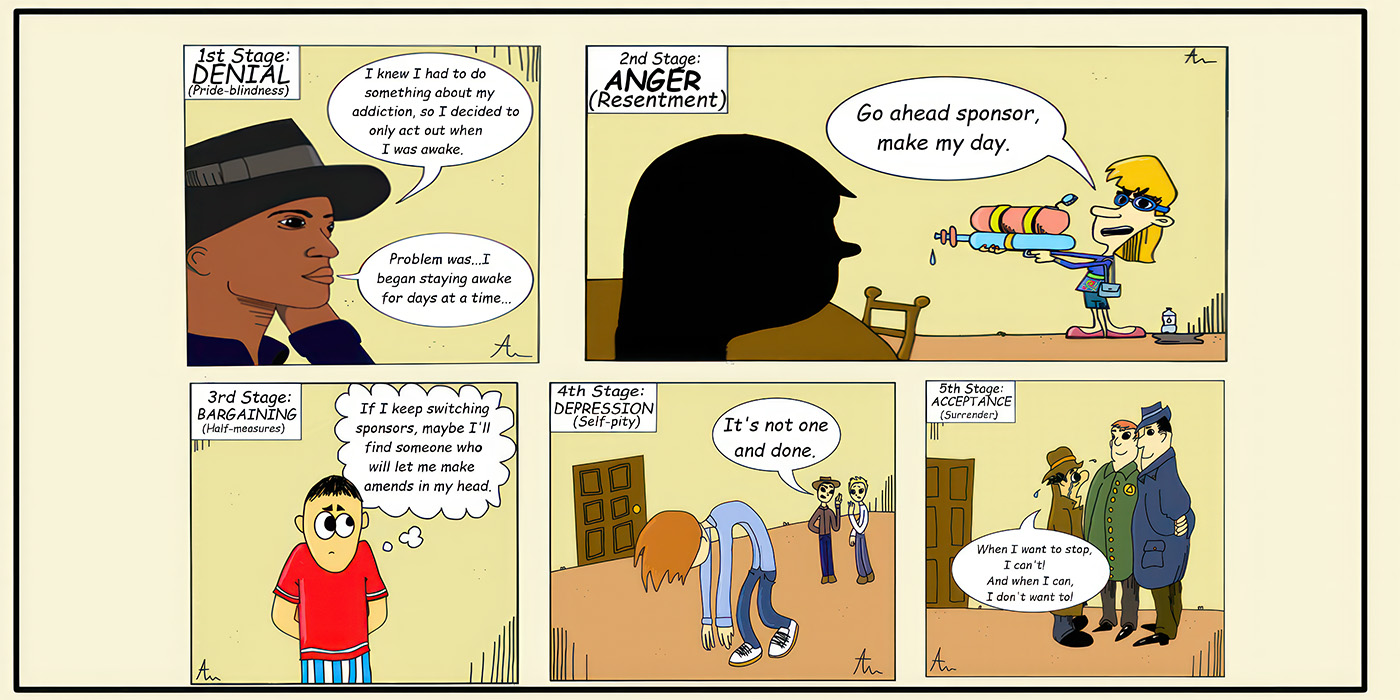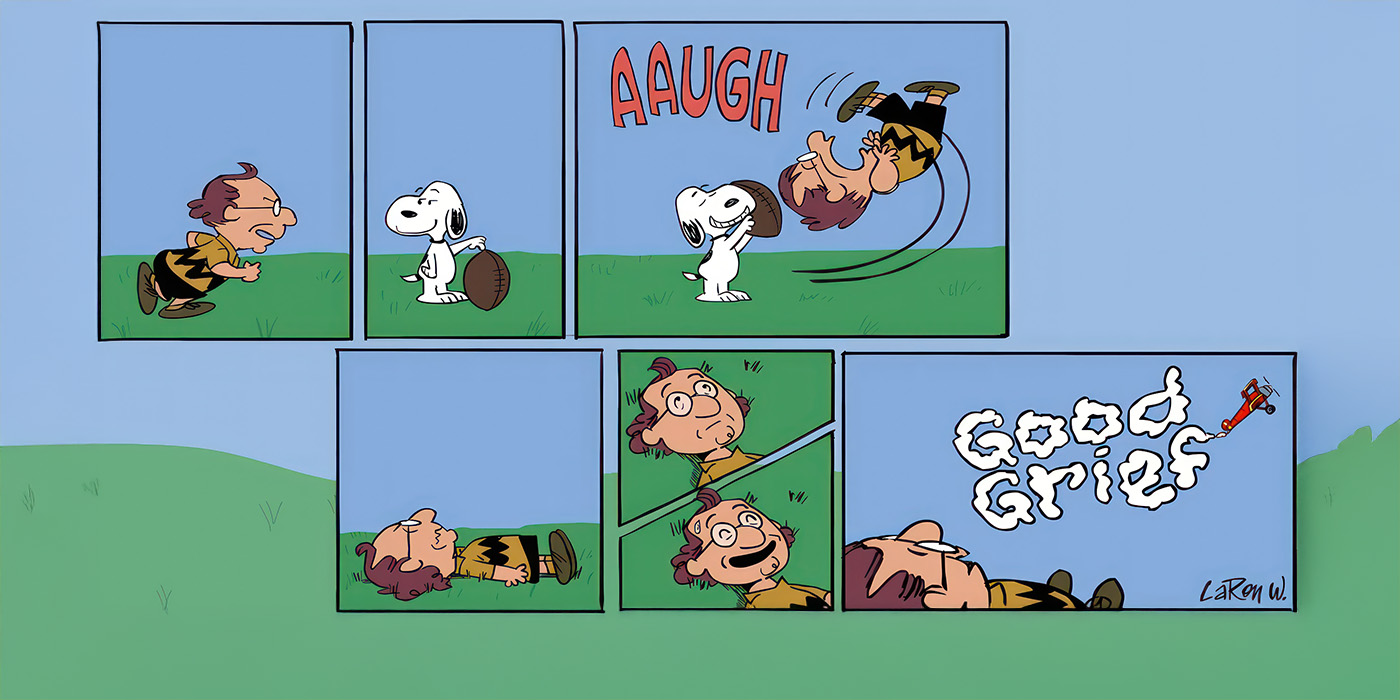
I practice no organized religion, but I may refer to specific religious traditions here because of their being examples related to my journey. In November 1985 I stopped acting out by means of chemical castration. This was because of life-threatening behaviors that were occurring as a part of my acting out. There was no emotional or spiritual treatment combined with it.
In May 1986 I found SA and was introduced to the concept of lust. In the English language lust frequently refers to sexual lust. However, lust is also often used in a general sense to describe intense desire or craving for many things. The sexual meaning of lust in SA recovery led to pursuing sobriety as progressive victory over lust. I later learned that I lusted after many other things including alcohol, drugs, food, and achievement. True recovery did not mean just stopping acting out with these things, but attaining a spiritual release from the lust that drove the acting out. Spiritual release from the craving and insatiability that characterizes lust is not a new spiritual concept. The Buddha taught this 2500 years ago. It is included as a part of the concept that was termed “duhka” in Sanskrit.
In 1986 I had no belief in God, no spiritual beliefs, and no spiritual practices. Recovery seemed to be impossible for me until a recovering Catholic priest introduced me to what he called four spiritual minimums. These are practices none of which mention God. However, they can be a pathway to developing a practical and user-friendly spirituality for recovery. This spirituality is entirely personal and may or may not include a traditional concept of a supreme being.
One definition of spirituality is based on the Latin word “spiritus.” This is a word that can be translated as breath. The ancient world recognized that when a person stopped breathing they had died. The assumption was then made that the seed of life was in the breath. During the time that the Christian Bible’s Old Testament and New Testament were written, it can be seen that there was such a belief in that there were descriptions of life being breathed into humans and also such statements as the spirit giving life. Then spirituality simply means to be filled with breath and life. That is, to be alive. It means for one to be spiritual one has to live their life. Addictions can be emotionally and physically deadly. Recovering from an addiction leads to a much more fulfilling experience of life which in the 12 step literature is described as a spiritual awakening or spiritual experience.
Religion and spirituality are related but not the same. The English word religion is derived from the Latin word, “religio” meaning obligation or bond. Over the centuries the English word came to describe a set of rules, practices, and beliefs related to one’s spirituality. These are extremely meaningful to many people in celebrating their spirituality. For example, in Catholicism attending mass is “celebrating” mass. However, religion is not the experience itself, but a variety (depending on which religion is practiced) of pathways that can be used to connect with that experience.
These are four simple practices (or spiritual minimums) from the 12 step program of recovery that can lead to a spiritual awakening or spiritual experience.
- Don’t use. With a primary relationship to an addictive substance or behavior there is no room for the development of spirituality, because the addiction serves as the all consuming solution to every problem and the means for every celebration. In other words it is the higher power around which the addict lives his or her life. One day at a time acting out the addiction must stop. Then there will be space for a spiritual experience. In other words the single most spiritual thing addicts can do for themselves each day is not to use.
- Meetings. All of today’s five major world religions (Hinduism, Buddhism, Judaism, Christianity, and Islam) utilize fellowships. A fellowship is a pathway to experiencing power greater than the individual’s own power. In religious traditions that power is associated with the divine. In 12 step recovery, the divine may or may not be where it leads. To get the most out of meetings it is best to take actions to connect with the people involved. That means participation. It is important to share in meetings. It is also useful to arrive early and stay afterwards to connect informally. Finally, it’s important to do service. That can include setting up chairs, making coffee, bringing up a topic, greeting people (especially newcomers), or leading a meeting. Meetings are most powerful when there is a connection.
- Sponsorship. That means get a sponsor, use a sponsor, and then be a sponsor. Before there were meetings and before there was literature, there was sponsorship. When AA co-founders, Bill W and Dr. Bob met, there was something in the magic of their one on one sharing that connected them with a power that allowed them both to stay in recovery for the rest of their lives. Using Bill and Dr. Bob as examples, having a sponsor is only effective when one connects with that person and receives their experience, strength, and hope. So use a sponsor. It is also essential to then begin sponsoring other people sharing your own experience, strength, and hope. This is exactly what happened to begin AA which ultimately covered the globe. Bill and Dr. Bob’s meeting allowed the experience of that power to emerge and then their sharing it with others allowed the experience to grow in power.
- Time. Time is a powerful spiritual quantity that grows in power as time passes. Practicing the first three spiritual minimums and giving it time will allow for the growth of the belief in a power that made possible something that an addict could not do by themselves. In order for this to happen, two aspects of time have to be considered. The first aspect is to “take time“. We must “take time” to practice the first three spiritual minimums. As time passes without using an addiction, and instead using meetings and using a sponsor, the steps are done and promises come true. That is an expression of the second aspect of time which is to “give it time“ (patience).
These four spiritual minimums can lead to spiritual recovery, a journey from not believing to believing in the experiences of others and as sober time goes on, there develops a belief in one’s own experience. Since stopping the addiction had been impossible utilizing individual efforts, then there must be some power greater than oneself and greater than the addiction involved in this recovery happening. This is an experience and not an understanding. There can be, but need not be, any intellectual concept or description of a supreme being associated with this experience. Either way, this is a starting point for continued spiritual progress.
Lee T., Tennessee, USA






